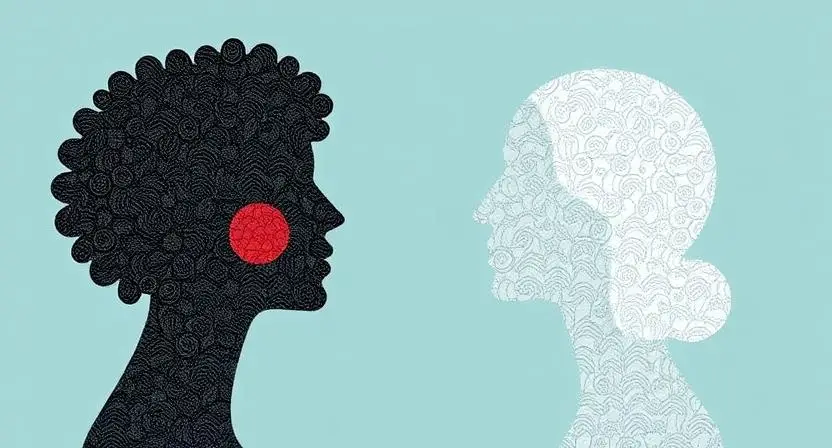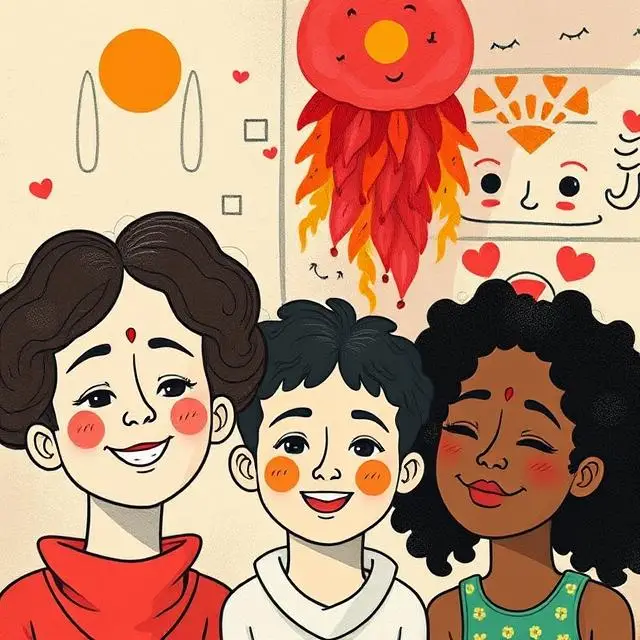Cultural diversity significantly influences emotional expression, shaping how individuals across the world convey and interpret feelings. While emotions themselves are universal, the ways in which they are expressed vary drastically depending on cultural contexts. Understanding the impact of cultural diversity on emotional expression is essential in fostering better communication, reducing misunderstandings, and promoting empathy in increasingly globalized societies.
Understanding Cultural Diversity and Emotional Expression (Foundational concepts)
What Is Cultural Diversity?
Cultural diversity refers to the presence of different cultural groups within a society. It encompasses variations in language, traditions, beliefs, customs, and behaviors. These cultural differences influence various aspects of life, including how emotions are expressed, understood, and regulated. Emotional expression varies across cultures due to differing cultural norms and values, which dictate what is considered appropriate behavior in emotional situations.
How Emotions Are Expressed Across Cultures
Emotions are expressed through a range of verbal and non-verbal cues, such as facial expressions, body language, tone of voice, and gestures. However, while emotions themselves are universal (e.g., happiness, sadness, anger, fear), the manner in which they are exhibited differs greatly between cultures. In some cultures, emotions may be displayed openly, while in others, they may be restrained or hidden. For example, in many Western societies, it is common for individuals to express emotions openly, whereas in many East Asian cultures, emotional restraint is emphasized, particularly in public settings.
The Role of Social Norms in Shaping Emotional Displays
Social norms play a crucial role in shaping how emotions are displayed. Each culture has a set of unwritten rules that govern what emotions are acceptable to express, when, and to what degree. These norms are influenced by factors such as social hierarchy, collectivism versus individualism, and historical traditions. For instance, in collectivist cultures, the emphasis is placed on maintaining harmony and avoiding conflicts, which often leads to a suppression of individual emotional expressions. In contrast, individualist cultures may prioritize self-expression, encouraging individuals to openly display their emotions.
Key Differences in Emotional Expression Around the World (Comparative analysis)
Collectivist vs. Individualist Cultures: A Contrast in Emotional Display
One of the most significant distinctions in emotional expression is found between collectivist and individualist cultures. Collectivist cultures, such as those in East Asia and parts of Latin America, emphasize the group over the individual. In these societies, emotional expression is often moderated to preserve group harmony. People in collectivist cultures tend to control or hide their emotions to avoid disrupting the social equilibrium.
In contrast, individualist cultures, like those found in the United States and much of Western Europe, prioritize personal freedom and self-expression. People in these cultures are more likely to express emotions openly, and emotional reactions are often seen as a reflection of individuality. These differing cultural expectations can lead to misunderstandings when individuals from these two types of cultures interact.

High-Context vs. Low-Context Communication Styles
High-context and low-context communication styles also play a significant role in how emotions are conveyed across cultures. High-context cultures, which include many Asian, Arab, and Latin American societies, rely heavily on non-verbal cues, contextual understanding, and implicit communication. In these cultures, emotions are often communicated through subtle gestures, facial expressions, and tone of voice, rather than explicit verbal expression.
On the other hand, low-context cultures, such as those in Northern Europe and North America, value direct and clear communication. In these cultures, emotions are often expressed verbally, and there is an expectation that people will state their feelings openly. The differences between high-context and low-context communication can create challenges when individuals from these two cultural backgrounds interact, as emotional cues may be misinterpreted or missed altogether.
Taboo Emotions: What’s Acceptable in One Culture May Be Forbidden in Another
Certain emotions that are acceptable in one culture may be considered taboo in another. For example, anger is often viewed as an acceptable emotion to express in Western cultures, but in many Asian cultures, it is seen as a sign of weakness or disrespect. Similarly, emotions such as grief and sadness may be expressed differently depending on cultural expectations. In some cultures, it is considered inappropriate to display grief publicly, while in others, mourning rituals may involve very public emotional expression.
These cultural taboos surrounding emotions can lead to challenges in multicultural environments, especially when individuals feel pressured to suppress or alter their natural emotional expressions to conform to social expectations.
The Psychological and Social Effects of Cultural Diversity on Emotions (Impact analysis)
How Cultural Background Influences Emotional Intelligence
Emotional intelligence (EI) It involves being aware of and controlling one’s own emotions while also empathizing with and responding effectively to the feelings of others. Cultural background plays a crucial role in shaping emotional intelligence, as individuals raised in different cultural contexts develop different ways of perceiving and regulating emotions. For example, people from collectivist cultures may excel in recognizing subtle emotional cues from others and understanding the emotional needs of the group, while individuals from individualist cultures may be more focused on self-awareness and self-expression.
These differences can affect emotional intelligence in multicultural settings, where individuals with diverse emotional frameworks may have difficulty understanding or relating to each other’s emotional needs and responses.
Misinterpretations and Conflicts Due to Differing Emotional Norms
Cultural differences in emotional expression can lead to misinterpretations and conflicts. For instance, a person from a culture where emotional restraint is valued may perceive someone from an open-expression culture as rude or inappropriate, while the latter may see the former as cold or distant. These misinterpretations can strain relationships, particularly in multicultural workplaces, educational settings, or social interactions. Developing a deeper understanding of these cultural differences is crucial in minimizing such conflicts.
Adaptation and Emotional Regulation in Multicultural Environments
In multicultural environments, individuals often must adapt their emotional expressions to navigate the expectations of others. This process of emotional regulation involves modifying one’s emotional responses to align with cultural norms, while still maintaining authenticity. For example, a person from an individualist culture may learn to suppress certain emotions in collectivist settings to avoid causing discomfort, while someone from a collectivist culture may need to practice more open emotional expression in individualist contexts.
Successful adaptation to these cultural differences requires a high level of emotional intelligence and a willingness to learn from others.
Embracing Cultural Diversity for Better Emotional Understanding (Solutions & future outlook)
Strategies for Improving Cross-Cultural Emotional Communication
To improve cross-cultural emotional communication, individuals and organizations can implement several strategies:
- Active Listening: Pay close attention to both verbal and non-verbal cues to better understand emotions.
- Cultural Sensitivity Training: Provide training in multicultural environments to help people understand the emotional norms of other cultures.
- Empathy Development: Encourage individuals to put themselves in others’ shoes and consider how cultural background may shape emotional responses.
The Role of Education and Workplace Training in Bridging Gaps
Educational institutions and workplaces play an essential role in bridging emotional communication gaps. By fostering an environment of inclusivity and cultural awareness, institutions can help individuals from diverse backgrounds better understand each other’s emotional expressions. Training programs on emotional intelligence, cultural sensitivity, and conflict resolution can be instrumental in building stronger, more harmonious relationships in multicultural settings.
How Globalization Is Shaping a New Era of Emotional Expression
Globalization has led to increased interaction between people from different cultural backgrounds, creating new opportunities for cross-cultural emotional exchange. As the world becomes more interconnected, it is essential to adapt to and appreciate diverse emotional expressions. Globalization is helping to create a more fluid and dynamic understanding of emotions, where individuals learn to navigate and respect cultural differences in emotional expression.
Conclusion
Cultural diversity significantly shapes how emotions are expressed and interpreted across the globe. By understanding these cultural differences, we can foster better communication, reduce conflicts, and build stronger relationships in both personal and professional contexts. It is essential to embrace and respect the various ways emotions are expressed, ensuring that we approach these differences with empathy, sensitivity, and an open mind. As globalization continues to bring us closer together, the ability to understand and navigate diverse emotional expressions will become even more vital in creating a harmonious, interconnected world.
FAQs
1. How does cultural diversity affect emotional expression?
Cultural norms shape how people express emotions some cultures encourage openness (e.g., the U.S.), while others value restraint (e.g., Japan). These differences influence communication, relationships, and workplace dynamics.
2. What are some examples of cultural differences in expressing emotions?
Happiness: In some cultures (e.g., Brazil), exuberance is normal; in others (e.g., Sweden), subtlety is preferred.
Anger: Displaying anger may be acceptable in individualist cultures but taboo in collectivist ones (e.g., Thailand).
Grief: Some cultures mourn loudly (e.g., Italy), while others emphasize stoicism (e.g., Finland).
3. Can misunderstandings arise from cultural differences in emotions?
Yes. For example, a smile may signal friendliness in one culture but discomfort or embarrassment in another. Such differences can lead to miscommunication in personal and professional settings.
4. How can we improve emotional communication across cultures?
Educate yourself on cultural norms.
Observe and adapt to others’ emotional cues.
Ask questions respectfully to clarify intentions.
5. Why is understanding cultural diversity in emotions important? It fosters empathy, reduces conflicts, and improves collaboration in our globalized world, whether in workplaces, education, or social interactions.
